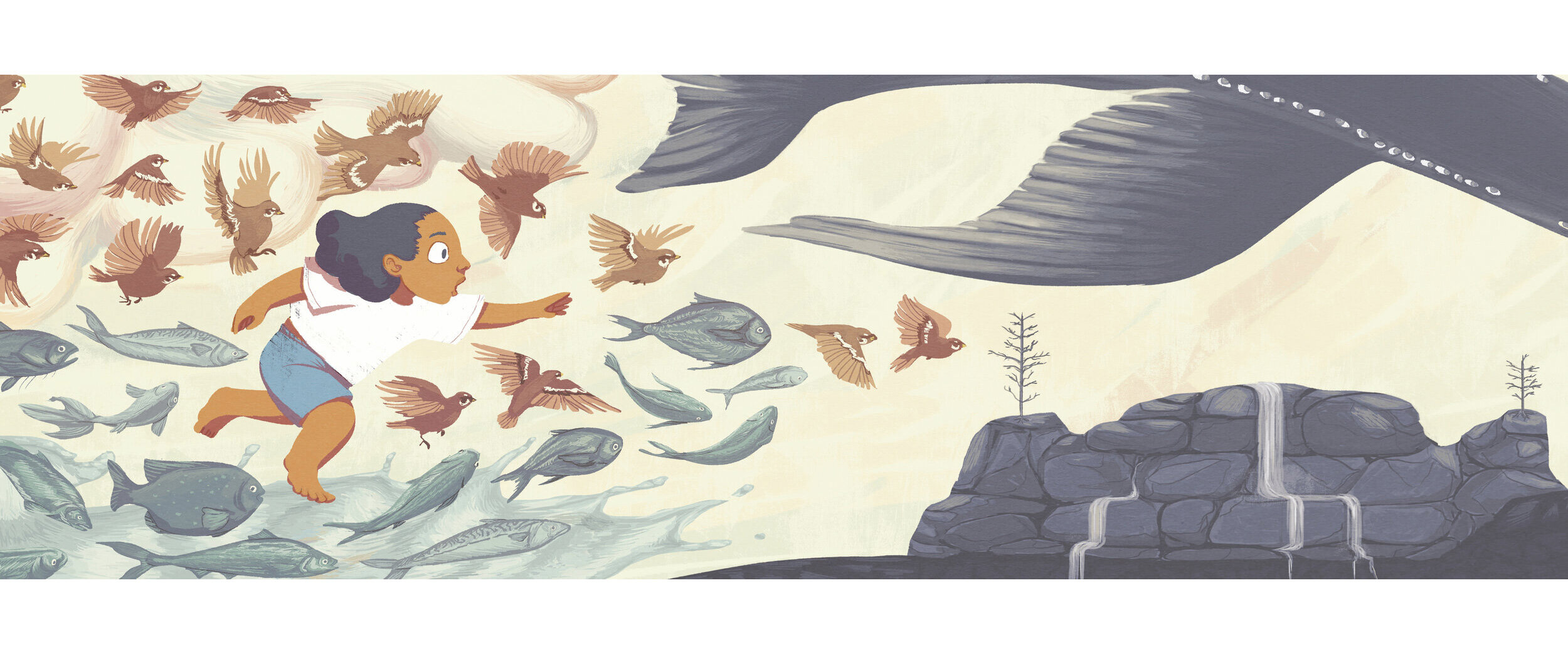Wordless…But Meaningful
by Aurora Zenaida Lourdes C. Sicat (PBBY Sectoral Representative for for Reading Advocates)
It has been said that a picture is worth a thousand words. With that being the case, then a book made entirely of pictures is worth an infinite amount of stories.
That is the beauty that wordless picture books bring. Wordless picture books are books that are entirely absent of text, which means that the entire story is told through the illustrations. Wordless picture books have so much to offer, for children and adults alike.
Confidence and Comfort
With the absence of text, struggling readers are able to take a “break” from decoding and are able to focus on the story itself. This builds confidence and allows them to tell a story without worrying about reading aloud. After all, there is no “right” or “wrong” way to read a wordless picture book. Because there is no fear, children feel a sense of comfort. These books could also instill a love of reading among reluctant readers.
“Ang mga Sikreto ng Langit at Dagat” by Nina Martinez, PBBY Wordless Book Prize Winner, 2019
Creativity
Wordless picture books provide opportunities for literacy-rich exchanges and conversations. They allow children to tell the story based on their own understanding. Children get to use their imagination not just once, but several times, because there will always be new ways to retell a story. This type of retelling could then lead to independent creative writing.
Pagkatapos ng Unos by Harry Monzon, PBBY Wordless Book Prize Winner, 2018
Comprehension
Aside from writing, wordless picture books also help build comprehension skills. The cover page and title could be used for predictions. The various illustrations in the story help children see that the story and pictures are connected - that even without words, there is a story structure being followed (beginning, middle, end.) Interpreting the pictures is one way of making inferences and using context clues, especially if the different details are given attention. Different questions could also be asked, allowing children to recall the details as well as analyze the story being told by the pictures. In addition, using wordless picture books also helps hone listening and storytelling skills, and helps children expand their vocabulary.
Parents and teachers have seen how much wordless picture books have been beneficial to their children and students. Jessy Villorente, a mom of one, shared that with wordless picture books, her daughter Alex is the one who comes up with the story. This also helped her see if the story that the child comes up with has continuity. In addition, wordless picture books let children come up with their own generalizations and conclusions based on the pictures alone.
Pibò by Christian Oliver Cruz, PBBY Wordless Book Prize Winner, 2018
Nina Altomonte also had the same experience with her son, Agimat, whose favorite wordless picture book is entitled “The Snowman.” He loved the book because of the free-flowing style of reading done by his mother, as well as the different interpretations made. Despite the many versions, however, Nina shared that the story more or less ended the same way, but with deeper reflections at the end. Aside from the benefits that her son gained from the book, Nina herself, as a parent, was able to engage her imagination. In fact, she said that wordless picture books make parents come up with other ways of interpreting the story. Truly, wordless picture books provide a wonderful shared experience between parents and children.
Teacher Tara Santos of Saint Pedro Poveda College used a lot of wordless picture books in her Toddler Class. She said that she loves wordless picture books because they help develop vocabulary. According to her, since most wordless picture books are concept-based (such as animals, colors, shapes, numbers, things that can be found at home, feelings, people, among others), it encouraged a lot of participation among her students, especially those who had yet to develop their vocabulary. The students would point at the images being shown to them, and their interest and participation were more than enough. Teacher Tara shared, “The very simple activity of showing them the book with just pictures is an introduction to a wide array of books that a child can open and read.”
Wordless picture books could be the stepping stone towards a lifelong journey of reading. They awaken a child’s imagination. They allow parents to come up with stories for their children. They create lasting memories. They provide many learning opportunities. These are just some of the things that wordless picture books could offer. The possibilities are endless, the rewards are great, and the effects are lasting. Truly, despite the lack of words, wordless picture books hold a whole lot of meaning.
Pibò by Christian Oliver Cruz, PBBY Wordless Book Prize Winner, 2018




